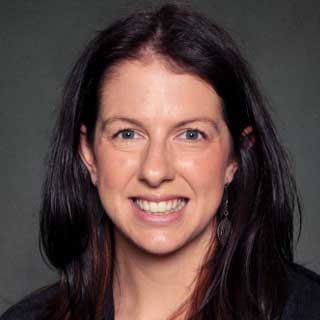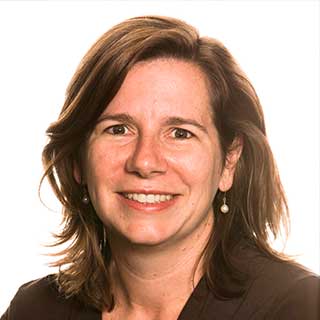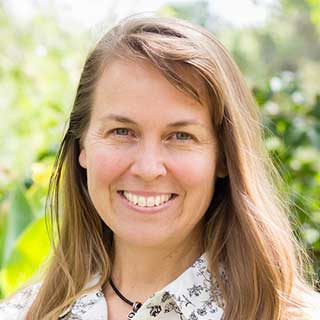Sequence 1: Stem cell understanding ⟩ Module 4:
Current and potential use and application of stem cell technology
The fourth module within Sequence 1 focuses on developing an understanding of the myriad of current and potential uses and applications of stem cell technology.
Summary
VCE Biology (2016 -2020)
Unit 2, Area of Study 1, Outcome 1, VCE Biology Study Design
Key Knowledge
Cell growth and differentiation
- the types and function of stem cells in human development, including the distinction between embryonic and adult stem cells and their potential use in the development of medical therapies.
Duration

Student learning outcomes
On completion of this module, students will:
- have explored current stem cell technology applications.
- have considered the potential use of stem cell therapy through investigating a specific avenue of stem cell technology.
Teacher background information
The core resources for this sequence are from the: National Stem Cell Foundation of Australia, Teacher’s Kit
Download Stem Cell Teacher’s KitNote: Since the Teacher’s Kit was written a number of the links to which it refers have become inactive. It nevertheless remains an excellent resource.
The relevant background reading and activities from this Teacher’s Kit are referenced in the white boxes below. Further background material and alternative activities are highlighted in yellow.
Background material
Teacher's Kit (pp.56-57)
Chapter 3 - Techniques for obtaining and specialising stem cells.
A basic overview of the history of stem cells and how stem cells are used in scientific research and applications today.
Teacher's Kit (p.82)
Chapter 4 - Stem cell use - now and in the future
An overview of the current applications for stem cell technology and the potential for future applications.
While the activities provide a useful structure for students to learn this topic the Australian Stem Cell Handbook provides more up-to-date information than the Teacher’s Kit.
Video
TED-Ed: What are stem cells?
Introductory animation with an easy to understand narration relating to basic stem cell science and the individual. Incorporates eight review questions.
Website
EuroStemCell: Reprogramming adult stem cells
The EuroStemCell site is a trusted website that provides teachers with detailed information on stem cells including properties, basics, medical potential and uses.
Website
EuroStemCell: Stem cell fact sheets
The EuroStemCell site is a trusted website that provides teachers with detailed information on stem cells including properties, basics, medical potential and uses.
Particular factsheets of interest:
Website
Wellcome Trust: Stem cells
The Wellcome Trust site is an authoritative UK website that provides teachers with detailed information on stem cells including properties, basics, medical potential and uses. By entering “stem cell basics” into the search box a range of topics can be accessed including:
- Medical uses of stem cells
- Medical potential of stem cells
- Properties of stem cells
- Types of stem cell
- The ethics of stem cells
Video
Catalyst: What are stem cells?
On the Catalyst website there are a range of videos dealing with stem cells including ‘What are stem cells?’, ‘Stem cell repair’ and ‘Stem cells and the brain’.
‘What are stem cells?’ (7:54 min) is a back-to-basics look at stem cells and is suitable for teachers and students (produced in 2009 – so may require contextualisation).
Video
Catalyst: Stem cell repair
On the Catalyst website there are a range of videos dealing with stem cells including ‘What are stem cells?’, ‘Stem cell repair’ and ‘Stem cells and the brain’.
In ‘Stem cell repair’ (10:35 min) students meet a patient who will trial stem cell therapy for arthritis of the knee. The footage may be considered graphic in nature for some students.
Video
EuroStemCell: Disease Modelling With Cells
A video presentation providing details on stem cell modelling in the laboratory and accompanying factsheet for teachers and students
Website (Videos)
EuroStemCell website: Videos and films
A range of informative and scientific videos and films have been made available by the EuroStemCell organisation.
Highlighted are the following videos:
- Cell fate: Journeys to Specialisation (23:02 min)
- Stem Cells - the future: An introduction to iPS cells (16:43 min)
Activities
Teacher's Kit (pp.62-66)
Activity 3.2 - IVF - How does it work?
This activity provides students with the opportunity understand the processes and procedures involved in IVF in order to highlight the controversy surrounding the use of human embryos for stem cell research.
Teacher's Kit (pp.70-73)
Activity 3.4 - Reprogramming cells-iPS stem cells and somatic cell nuclear transfer?
Four activities that aim to help students consolidate their understanding of iPS and somatic cell nuclear transfer (SCNT).
Teacher's Kit (pp.87-92)
Activity 4.1.2 - Demystifying stem cells use. What are stem cells being used for?
This activity poses a series of questions to students requiring them to explore some of the current applications of stem cell therapy. It explores a number of conditions in which treatment relies on stem cell therapies and further applications for stem cell technology.
Teacher's Kit (pp.93-94)
Activity 4.2 - Uses of stem cells - media review
This activity requires students to examine the way in which stem cell science is presented in the media in addition to exploring a current or potential application for stem cell science through a guided review of a media source on the topic.
Teacher's Kit (pp.95-99)
Activity 4.3 - Stem cell research assignment
This research assignment positions students to explore a current or potential application for stem cell technology in detail.
Other potential activities
Website
University of Utah: Unlocking Stem Cell Potential
An interactive presentation that students can work through at their own pace. There is the potential for students to complete a note-taking exercise.
Activity
Stem Cell Socratic Discussion REPEATED (stimulus - 60 minutes or other piece)
This activity is a follow-up to the Socratic discussion in Module 1. It provides the opportunity to engage in open discussion around scientific issues in a supportive environment.
Students are required to read and reflect on, in this case, a media article on a topical stem cell science issue.
Russian Roulette: The radical procedure that could save lives - 60 Minutes or other media piece / stakeholder view.
This will not only encourage consideration of stem cell science but also elicit progression of student beliefs and understanding.
The following two websites provide background on the pedagogical approach:
In addition to the information presented, in large groups, the session can be run with an ‘inner circle’ and an ‘outer circle’. The Socratic discussion is then run in two phases. Initially only the students in the inner circle are allowed to contribute to the discussion. Subsequently, students in the outer circle swap with the students in the inner circle and the discussion continues.
The focus of this activity should be on developing student knowledge and understanding of stem cell science and potential for medical therapies. Students should appreciate the difference between those therapies that have been substantiated through clinical trials and those that are yet to be proven. The focus should be on the science and not on the moral and ethical issues. These are dealt with in Sequence 2.
Activity
Magazine Activity
This activity allows students to take on the roles of different members of a magazine publication team tasked with preparation of a special “Stem Cell” edition.
The emphasis of the magazine must be to provide readers with scientifically sound information; avoiding all hype. Students should be encouraged to write scientifically rather than journalistically.
Students can choose their role based on strengths and interests from the following list:
Editor – Responsible for writing the introduction for the special “Stem Cell” edition of the magazine and provides readers with an insight into what the magazine will cover. The editor must therefore work closely with the reporters and other contributors to pull a 150 - 300 word summary together in the From the Editor section. The editor is also responsible for the structure of the magazine including the order of the stories and word count adherence. (Appoint 1 or 2 students to the role of editors).
Graphics Supervisor – Responsible for the Magazine logo and must work with the editors and graphic artists to ensure the logo and Special Edition name are linked. The logo design should represent the latest in stem cell technology and be accompanied with a 100 -250 word description of the meaning behind the logo. The Graphic Supervisor works in conjunction with the graphic artists and ensures the magazine look and feel is consistent.
Front Cover Graphic Artist – Responsible for creating the magazine's Front Cover and writing the 100-250 word description describing the relevance to “Stem Cells” and this edition of the magazine. The Front Cover Graphic Artist must work with the Back Cover Graphic artist and assist reporters with image design if required. The graphics and word description should be specific to stem cell scientific understanding and knowledge with all images correctly referenced.
Back Cover Graphic Artist – Responsible for creating the magazine's Back Cover and writing the 250-word description describing the relevance to “Stem Cells” and this edition of the magazine. The Back Cover Graphic Artist must with the Front Cover Graphic artist and assist reporters with image design if required. The graphics and word description should be specific to stem cell scientific understanding and knowledge with all images correctly referenced.
Reporters – The remainder of the students are reporters that take on specific areas and are responsible for writing 250 – 500 word stories according to the following role descriptions. Ideally each story should fit on a half A4 page and include 1 or 2 relevant images. The layout and images are to be chosen by the reporter, with input from the editors and graphic designers. All reporters are required to write a 50-word summary for the editor to explain the intention of the article. This must be supplied prior to writing the article.
- Reporter - New Technology (1 to 3 students with individual stories examining new stem cell technology applications) Focus on new technology in the area of stem cell therapies.
- Reporter – Politics (1 to 2 students examining the latest in policy decision making, funding or legal issues relating to stem cell technology)
- Reporter – Patient Advocate (1 to 2 students examining the impact of stem cells on patients and the importance of stem cell treatment)
- Reporter – Latest from the Laboratory (1 to 3 students investigate the latest research being undertaken in the area of stem cells) Focus on the the use of stem cells in other areas of medical and biological research.
- Reporter – Media Review (1 to 3 students identify recent media articles specific to an area of stem cells and reviews the content in a blog format)
- Reporter – Australian News (1 to 2 students examine an area of stem cell research from Australian research institutions).
- Reporter – Sport (1 to 2 students examine the application of stem cell technology in the sports arena and the impact on sports people).
- Reporter – Human Interest Story (1 to 2 students use knowledge of stem cell therapy to provide a human interest story)
Once completed the magazine can be published as an electronic magazine on the school website providing a valuable resource for the latest in Stem Cell technology.
 Contemporary VCE Biology
Contemporary VCE Biology


